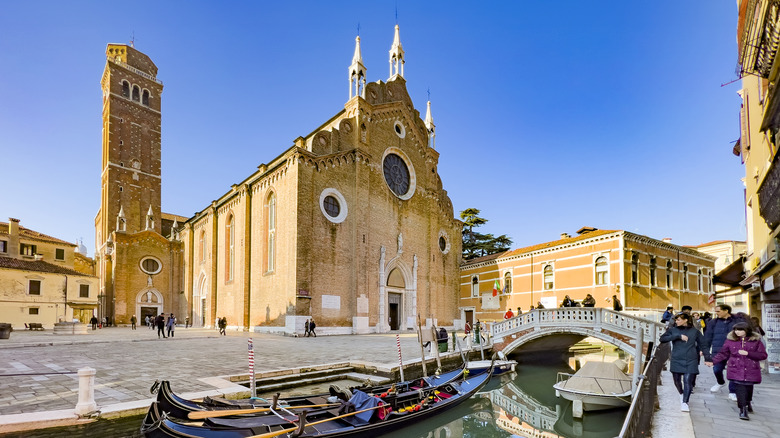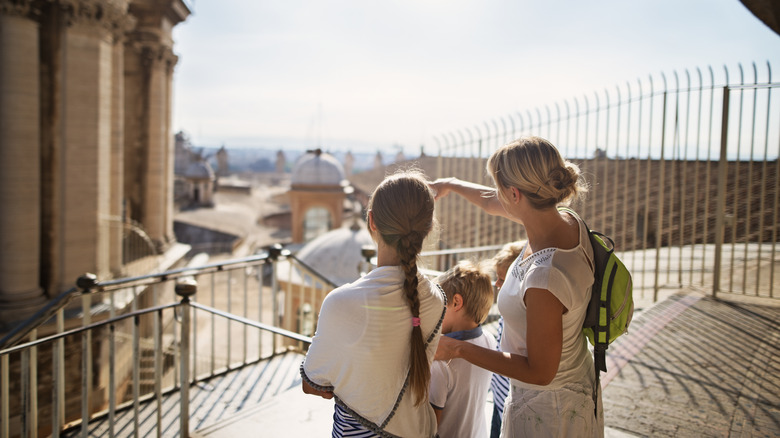Rick Steves Reveals Crucial Tips Every Traveler Needs To Know About Visiting Museums
Visiting a museum can be a meaningful experience for visitors who benefit from the connections they create. People feel connected to the past as they appreciate different works of art that have been preserved from other cultures. They may also feel a connection within a community of others who spend time reflecting on the beauty of these same artistic accomplishments. Rick Steves, best-selling travel author, radio host, and television personality, loves to explore museums in different countries he visits. So much so, he shared several tips on making the most of these visits during an interview with Lois Reitzes on the "City Lights" program, "ATL Up and Away: Travel Tips with Rick Steves" on WABE.
"A museum is a celebration of a country's heritage and culture that you can find nowhere else," Steves explains. He states that one of his favorite ways to enhance his experience in a city is to spend time at a local museum before he ventures out into the local countryside. "I like to go to a museum in the big city and see the romantic artists, how they portrayed the scenic and natural wonders of their country back in the Romantic Age, back in the late 1800s," he says. Steves suggests that spending time in a museum before he explores the area is a way to immerse himself in the artists' perspective of the country's unique beauty. "I love how the culture intersects with nature," he points out.
Explore art collections in churches
Steves explains during the interview that when artwork correlates with its environment, it's called "in situ," a term that describes a connection to the area in which it's displayed. Steves says that when a piece of art is relocated from where it was originally created, it loses a little of its luster. "If you get a chance to see the art where it was commissioned to be ... where it was designed to be by the artist, whether it's in a palace or whether it's in a great church, that's art in situ, and that is really nice," he observes. He also emphasizes that many collections of art are actually displayed in buildings other than museums and to seek these out. Don't limit yourself to a specific type of venue to appreciate the works of art. "A lot of churches these days are almost like museums in themselves," he points out.
Steves offers his favorite example of art in situ in Venice, Italy. The Santa Maria dei Frari, also known as the Frari, is a Gothic style church originally built in the 13th century. It is filled with artwork that represents the Venetian Renaissance, which is characterized by the effects of light and beautiful colors. He explains that the church contains six to eight chapels, each of which features a "sumptuous altarpiece painted by a great Venetian artist, and to see those in situ is a beautiful experience."
Make a reservation to visit the major galleries
Another tip Rick Steves recommends during the program is making an appointment before your visit. Over the past few years, many known museums began requiring reservations to control large crowds. "In the old days, they just opened the gates, and everybody packed in there, and it was a mosh pit in front of the Raphael frescoes in the Vatican museum," he describes. He points out that many museums don't even sell tickets at the entry door anymore. This new system is better for the visitors and also better for the artwork. The large crowds can affect the humidity in the room, which, as per Steves, "is bad for the fragile and precious art." Rather than standing in lines for hours, people show up at their appointment time and can walk right in. "It's that lack of insanity that ... really makes a lot of sense, and the museums like it."
Finally, Steves suggests visiting museums in "secondary" cities of the country you're visiting. In other words, don't limit your visit to larger cities with specific collections. Secondary cities also contain beautiful exhibits and often have smaller crowds. He points out that many of these museums don't take online reservations like their larger counterparts, but the smaller crowds often mean that booking in advance wouldn't be necessary. The joys of a visit to a museum are one of the benefits of traveling, and being intentional about your plans will make these visits worthwhile.


